We hadn’t much considered the maintenance of airliners flying to and from Hawaii until two things caught our attention: 14 Hawaii flight diversions and a pilot’s mention of aircraft maintenance outside the USA. Safety on Hawaii flights takes on a whole different meaning when the nearest place to land can be up to 3 hours away.
Fourteen Hawaii flight diversions – most appear mechanical.
While airliners have redundant systems, and we also have stringent ETOPS on the world’s longest overwater flights to Hawaii to prevent these problems from becoming catastrophic, they are still concerning. The most recent diversion was for a serious trim motor malfunction which prevented the A330 airliner from traveling to Hawaii. This brings to mind the following question:
How are aircraft for Hawaii flights maintained?
John, a frequent commenter we believe to be an airline pilot, said, “SWA outsources Aircraft Heavy Maint Checks to El Salvador.” We’ve seen press releases here and there about overseas aircraft maintenance agreements, but as with diversions, we generally haven’t thought much about it before this. So we checked further into the maintenance of these planes, and John is correct.
Understanding the ABCD airliner maintenance check system.
Airlines call the routine maintenance inspections “checks,” and name them A, B, C, and D. While A and B checks are light checks, C and D are heavy checks. D checks, in particular, are inordinately time-consuming and multi-million dollar expensive and may take place at companies other than the airlines themselves.
A checks are performed every 200+ flights and require up to 70 person-hours of work. It varies by aircraft, flight cycles (take-offs/landings), and hours flown.
B checks are every 6+ months and require up to 180 person-hours of work. A and B checks can be combined.
C checks take place every 20+ months typically and require that a majority of the plane’s components be inspected. This aircraft will be out of service for up to 2 weeks. Up to 6,000 hours may be needed. Sometimes, a 3C check is done simultaneously, which looks for corrosion or specific “high-load” components of the plane (think Aloha 243). This may also be the time to do any interior upgrades.
D check. This is the biggie, specifically referred to as the “heavy maintenance visit.” It typically takes place every 6-10 years, and the entire plane is subject to inspection and overhaul.” Paint may also be removed to check the plane’s actual metal skin below. All wing, tail, flap, and rudder panels are unscrewed. Cables, bolts, bearings, and brackets are removed and inspected. Even the landing gear is taken apart and checked for possible cracks, leaks, and corrosion. Jet engines are removed as well. The interior, including seats, tables, bins, and side panels, is taken down to bare metal for inspection and then reassembled.
A D check can take as much as 50,000 person-hours to perform.
This takes place over two months out of service. It is a multi-million dollar undertaking, and planes are scheduled for these far in advance. It can also be the time to remove older planes from service to avoid the D check. Typically, only two to three D checks are done in an airliner’s lifetime.
Why is Hawaii aircraft heavy maintenance outsourced overseas?
In a word, cost. We’ve seen estimates on the cost of a D check being $1.5 to well over $5 million depending on the plane. And those numbers are probably relatively low.
Last year, Hawaiian Airlines signed an expanded airframe maintenance agreement with Singapore-based SIAEC. The company is doing heavy maintenance checks and painting for the company’s A330 widebody fleet. Hawaiian flies the planes some 13 hours to Singapore to be able to have the work done there rather than in the U.S.
Hawaiian Airlines said, “We are confident in our choice of SIAEC as a long-term provider and partner.”
Is such heavy overseas maintenance dangerous?
Most big U.S. airlines have moved D check maintenance overseas, where apparently few mechanics are FAA certified, and some may not be able to read or speak English. To our understanding, all of the technical manuals are in English only. FAA-certified mechanics, on the other hand, must have complete English skills. Mechanics in other countries do not necessarily have those skills.
We heard that less than 10% of foreign airline mechanics have English proficiency. And while the facilities themselves may be FAA certified, that does not mean that all or even most of their mechanics are.
Previous foreign maintenance nightmares.
First, an Airbus with a D check performed in Xiamen, China, at a facility used by U.S. airlines, had 30 screws missing from one of its wings and flew for five days before mechanics in Boston uncovered the problem. Another Air France plane with its D check in China was grounded when it was discovered that the plane’s paint was of the wrong type and flammable. And in another case, an Airbus had all toilets overflow and needed to divert on the first flight following a D check in China.
Also, a U.S. Airways (American Airlines now) 737 had to make an emergency landing when it was determined that the main cabin door started to fail when the El Salvador mechanics installed components backward.
Faulty maintenance work at overseas facilities is frequently found when subsequent safety work is done in the U.S.
Southwest heavy maintenance is in El Salvador.
We can confirm that Southwest does heavy maintenance at a facility in El Salvador. We’ve also been told that Delta may send them to Mexico, and United uses China. American Airlines is said to have the most extensive in-house heavy maintenance facility in the U.S.
The bottom line is that the foreign mechanics that do this hugely laborious and critical safety work make a fraction of what is paid to US-based, FAA-certified mechanics.
Aeroman, used by Southwest, has exploded into a huge complex in El Salvador with nearly two dozen production lines and many specialties.
Congress has expressed concerns, too, over the FAA’s lax oversight of these foreign facilities. “Report after report by successive DOT Inspectors General has revealed troubling deficiencies in FAA oversight of foreign repair stations that perform more and more critical safety work on US-registered aircraft,” said one senator.
SWA points to the good safety record of foreign repair stations, but at the same time, uses its mechanics to promptly inspect aircraft shortly after return to the U.S.
You may not see the mechanic who worked on your Hawaii flight’s aircraft, but your life depends on them.
Get Breaking Hawaii Travel News
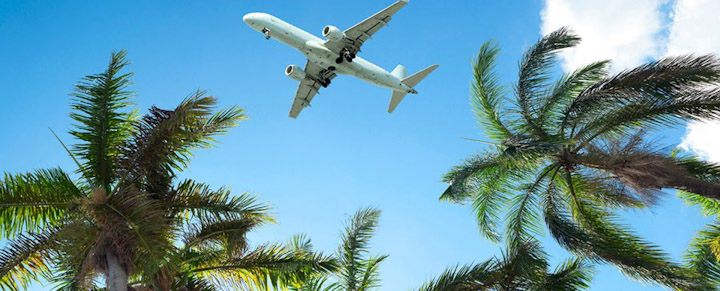
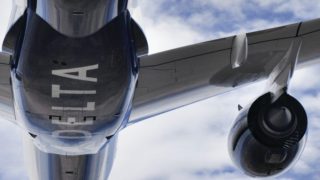
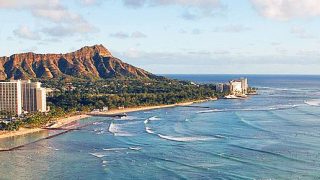
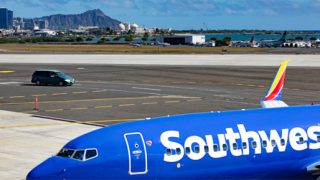

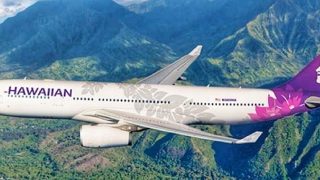

The FAA should be all over the Foreign Country companies that perform Any Maintenance on Aircraft. Understanding cheaper labor costs and such, however, if there’s not any reliability of the job performed properly, significant lives are at risk. The FAA Must have Complete in person Oversight! This is Crazy.
“Faulty maintenance work at overseas facilities is frequently found when subsequent safety work is done in the U.S.’
I think all C and D level maintenance work need to be done with FAA certified mechanics with highly proficient English language comprehension.
I get anxious thinking about taking a twin engine jet ride across the great expanse of the Pacific Ocean where no diversion airports exist. ETOPS can only be trusted up to a certain point. Once an ETOPS jet falls into the ocean between the islands and the continents, people are going to think whatever happened to the 4 engine jets.
Thanks for research on the different maintenance programs jets have to undergo and where the maintenance is done.
Am curious, after reading the article, which airline would u feel more secure on. Would you consider switching from Hawaiian to American Airlines, which seems to have a larger maintenance base in the US.
Thank you,
Anthony A
Hi Anthony.
It is confusing and the truth about heavy maintenance feels largely hidden by the airlines. Try searching and you’ll see what we mean. Honestly, whether we like how they do it or not, SWA is probably the most open and direct in addressing the subject.
Aloha.
I’m certain this info would be hidden by all the airlines. Your article opens a very interesting door.
What are the dates of the reports you cite?
Why is the FAA allowing this to happen? I think Congress needs to step in and demand that all US owned aircraft being 100 percent serviced here. I think if more travelers were aware ot this, they would be a bit more concerned about the aircraft they are flying on.
I’d be more concerned if you were able to report, with certainty, that there was some link between fatal crashes and overseas heavy maintenance.
Also, is there any evidence that American and international airliners are walking away from training and follow-up inspections? Any evidence that overseas heavy maintenance facilities have a significantly worse outcome than domestic facilities?
We can sell aircraft around the world without some maintenance being performed in the countries that buy our aircraft.
On the other hand, the FAA should bar such maintenance in countries that have quality problems.
Maybe the Hawaiian Seaglider is the future of safe Hawaiian travel?
Sea glider flies too low and too slow. Hardly has the range to travel far from Oahu to Maui, much less to Kona or Hilo.
sounds like one of these typical situations where there has to be a major catastrophe before safety wins out over economics
Aloha BOH,
Mahalo for this information. I will be flying American from now on.
I wonder how many of us who fly would be willing to pay an additional 10-20% higher airfare so that our airlines’ only use the more expensive (and ostensibly safer) FAA-certified maintenance services? I would. Would you?
We should not have to.
The airline that tried that (added 10-20% to fares) would be bankrupt. The flying public has shown we will accept every manner of discomfort, in the air, to save a few bucks.
Yes I would!!!
Maybe better to consider 10 – 20% being taken from corporate exec pay and benefits.
Micahel,
Why? If they have been outsourcing the heavy (and other) maintenance and functions for years – nothing has changed as to the service they have been providing. Only our knowledge of it has.
So, for me, no fatal crashes = acceptable maintenance. For others, be my guest – pay 10-20% more to give up the safe service you have been receiving and replace it with a now overburdened domestic maintenance crew. Heck, the airlines will probably try to move the overseas crew to the USA as they are familiar with their aircraft. So, same folks, 20% more.
That English issue all by itself is the most concerning. (Reading)
So all tech manuals are in English and few of the overseas workers speak English! What could possibly go wrong!? Sure makes me want to reconsider my transocean flights on Hawaiian. I never fly on Southworst so that is not an issue for me so I am also relieved that American still has their own facilities in the USA.
So Don I take it by your somewhat “misinformed” comment that you only drive American cars too. Tech manuals, just like instruction manuals you might get when you buy a TV etc are in multiple languages. Let’s not be so naive as to think American workers are the only proficient ones.
Then there’s really no excuse for mistakes if you say these manuals are in other languages besides English
Thanks for this valuable information! I think I will be favoring American in the near future. Investor return should be secondary to safety. How is QC being monitored??
You raise some very troubling issues but thanks vey much!
It all amounts to “How much are you willing to pay for a ticket?”
We used to go to Maui every year pre pandemic, The resort we stayed at a 3 bedroom, If I could catch the date right was around $800 a night, Same place is now over $2000, I have over a million Marriott points, The resorts that are condo type, don’t even show any room open for over a year, and if they do what used to be 800k points for a 2 bedroom is not like 2 million. Even if flights where free, I’m not willing to shell out 15k for 1 week .. I hope it comes back to reality at some point.
Hi Rob+Jeff. Well this is certainly an eye opening article. Something we all take for granted in thinking that inspections are done in the U.S. One more pound of stress and worry on those who are getting ready to fly (my husband and myself this Tuesday). I am inclined to think of using American after I read this. I am only sorry I read this today. Mahalo and enjoy your weekend.
Surprised the FAA would allow this.More and more jobs leave the states.